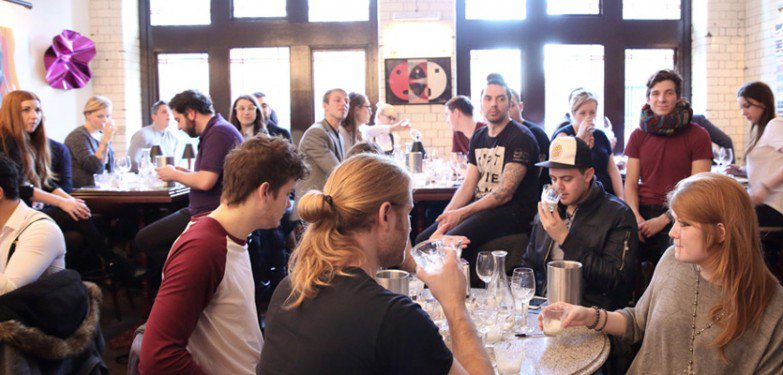The national spirit of Peru boasts a diverse category that’s made for using in plenty of cocktails beyond the classic Pisco Sour
In the last two years, pisco consumption in the UK has increased more than 200%, yet many working in the bar industry lack knowledge about this versatile artisanal spirit.
It was with this in mind that the Peruvian Trade & Investment Office in the UK partnered with Imbibe to host a masterclass on the category with Miguel Arbe, executive bars manager of the Ceviche group, and Ceviche founder Martin Morales.
‘Pisco is a spirit made with grapes, similar to brandy,’ began Arbe, ‘but there are certain rules that set Peruvian pisco apart. You can only make it with eight varieties of grapes, which are divided into aromatic and non-aromatic categories.
‘Distillers can only use the juice of the grape to make Peruvian pisco, not the stalks. And after it’s been distilled once, that’s it. Nothing is added, not even water, and it must be rested in an inert vessel for at least three months. Finally, the distillation strength must be between 38% and 48% abv.’
He went on to lead a tasting of four different piscos and cocktails. The first was made with the non-aromatic grape Quebranta, which had earthy and raisin flavours. ‘We use this one in a Pisco Sour because it stands up to the egg white and lime juice,’ Arbe explained. ‘It’s a very versatile grape for cocktails.’ He then shared a different drink made with Quebranta called The Soho, whereby pisco is infused with limo chilis, and the resulting liquid is mixed with elderflower liqueur, lime, cucumber and cracked black pepper.
Next up was a pisco made from aromatic grape Italia. The spirit was very floral, with aromas of rose, hay and tropical fruits. Arbe showcased how it worked in a delicious Pisco Punch that also included red vermouth, pineapple syrup and bitters.
| The eight grape varieties used in pisco | |
| Aromatic | Non-aromatic |
| Italia | Quebranta |
| Moscatel | Mollar |
| Torontel | Negra Criolla |
| Albilla | Uvina |
Round the blend
One of the other types of pisco that is made is acholado, which is a blended pisco usually combining two or more non-aromatic and aromatic grape varieties, providing the opportunity for master blenders to explore and highlight different characteristics from each grape. Arbe used it in a Chilcano, essentially a Moscow Mule that swaps the vodka for pisco. Despite Pisco Sours being the national drink of Peru, the Chilcano is currently the most popular drink there.
The event was rounded off with mosto verde pisco, which is made when the distillers halt the fermentation process early to leave some sugar in the must. ‘This is such an aromatic pisco it’s best enjoyed by itself,’ shared Arbe.
And before everyone knew it, the masterclass was over.
 ‘This seminar was incredible, I didn’t know much about pisco,’ said attendee Dan Garnell from Happiness Forgets. ‘It’s something I can use in the bar now. The difference between those two types of grape, they were 180 degrees from each other. That’s something that you don’t see in other categories.’
‘This seminar was incredible, I didn’t know much about pisco,’ said attendee Dan Garnell from Happiness Forgets. ‘It’s something I can use in the bar now. The difference between those two types of grape, they were 180 degrees from each other. That’s something that you don’t see in other categories.’
Take part in London Pisco Sour Week 2016 
6-12 February 2016
The event dedicated to Peru’s national cocktail is returning to London. If your bar would like to get involved, please get in touch with the Peruvian Trade & Investment Office: [email protected]; https://www.facebook.com/LDNPiscoSourWeek/

